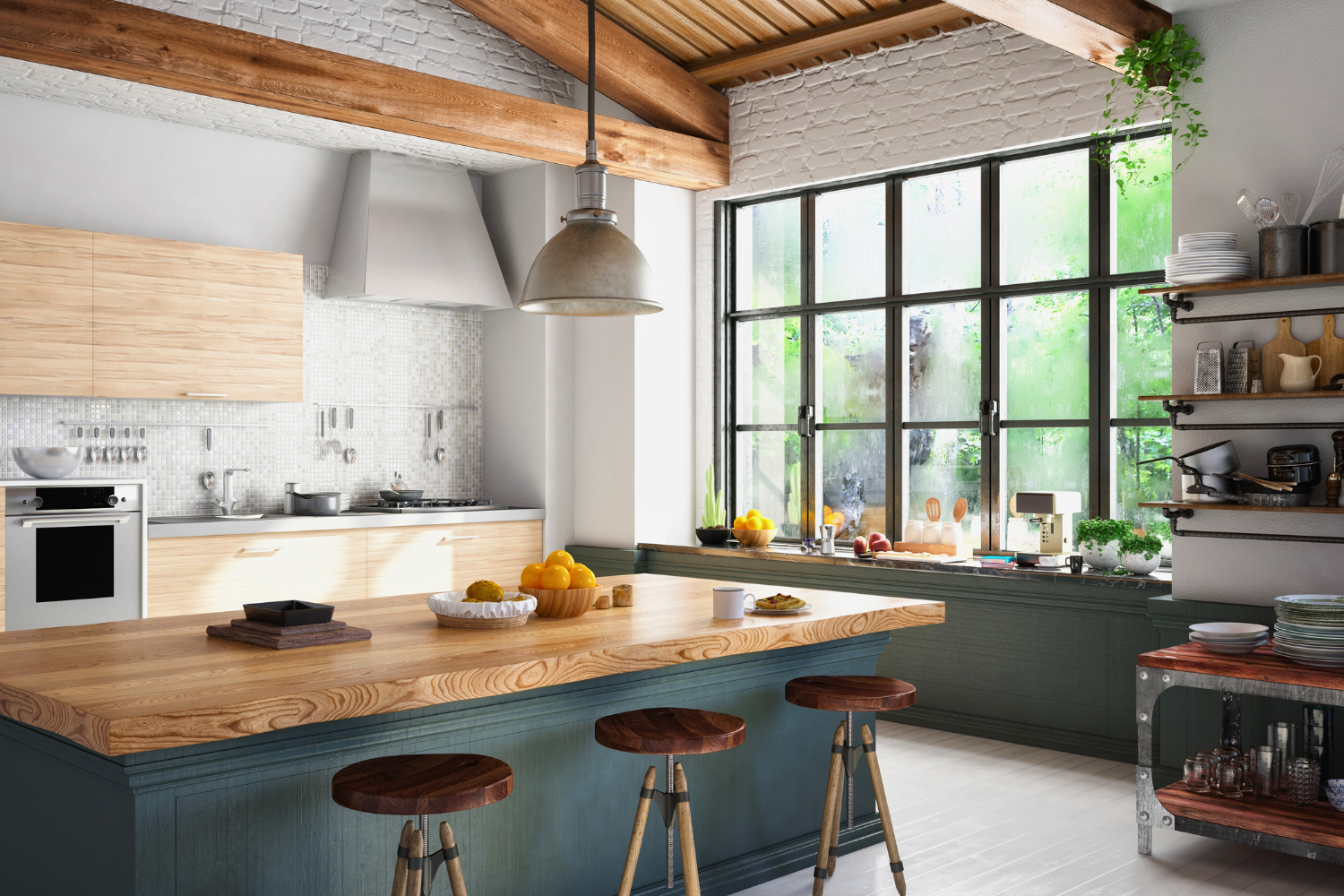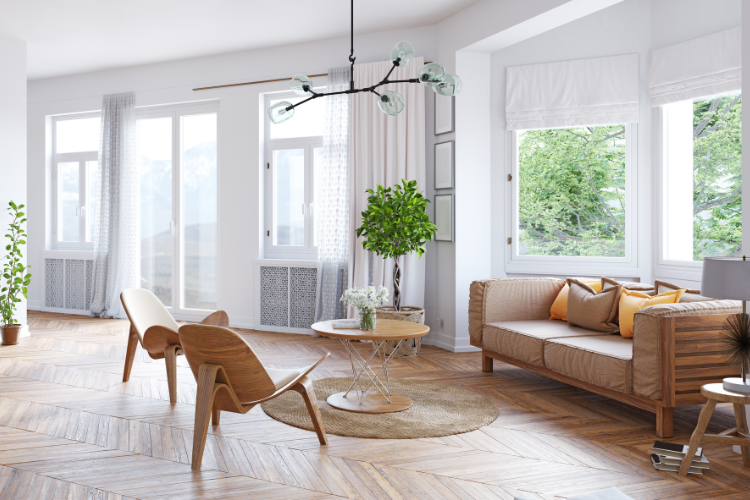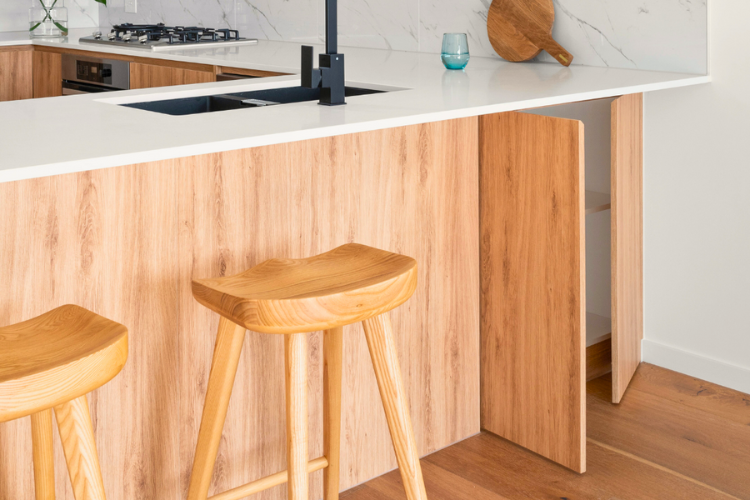8 Steps to Designing a Kitchen You'll Love to Cook In

So you're ready to renovate your kitchen?
All you want is a kitchen that feels easy to cook in, a place to keep all your stuff, something that looks beautiful (and maybe resellable down the track) and something that will work for the kids too.
But after chatting with friends, family or just your partner, all you have is war stories about their renovation but still no idea where you need to start and what the key steps are to redesign your kitchen.
Don’t worry - I’ve got you!
Let me share with you my 8 core steps for designing a kitchen that ticks beauty, comfort and function for you and your family.
In order to achieve this, your need to:
- understand how you work best in the kitchen
- collect a list of items that you need to store in the kitchen
- select the best materials, layout, and design elements for the space.
With these 8 steps, you'll be able to create a kitchen that you'll love cooking in and that will last for years to come!
1. Start by considering how you use the kitchen.
Think about the activities you do in the kitchen and how you move around it. Here are some starter prompts:
- Do you have a breakfast routine?
- Do you have a coffee system?
- What is your step-by-step process for cooking dinner?
- How many people use this kitchen at one time?
Getting into the specifics of how you do all the activities in your kitchen and who does them, will help you decide what is really important to include, improve and illuminate in your new kitchen design.
2. Choose a style that reflects your taste.
Theres no point putting in a modern white kitchen when you really love the look of a Hampton-style (aka shaker) cabinetry. The aesthetics play an important role in helping you feel excited about cooking, and drawing you into the space.
The other key consideration is the style of your home. Whilst technically, you can do whatever you want most of the time, usually a kitchen suited to home-period will feel more harmonious and ‘right’.
Ultimately though, whether you prefer a modern, industrial look or a cozy, cottage-style kitchen, choose a style that you’ll love!
3. Make sure you have enough storage space.
To do this, you need to take an inventory of what you actually have to use and keep in your kitchen. I recommend quite literally going into your kitchen with a clipboard and lined piece of paper and writing down every single item and its quantity.
You don’t need to overcomplicate this.
E.g.
12 x tall tumbler glasses
12 x kids' cups
23 x coffee mugs
When it comes to planning out your kitchen layout, literally look at the storage and tick off or write on the plan where each item will live.
This might sound over the top, but nothing will make you angrier than paying tens of thousands of dollars for a new kitchen that STILL doesn’t solve your storage problem.
4. Plan lighting.
Without light, you can’t use your kitchen properly.
Sounds obvious but there is never enough lighting put into kitchens, and when you realise you need a light somewhere, it’s usually too late.
Here are some areas people commonly forget or stuff up the lighting plan:
- Over the island bench
- Over the sink
- Over the stove
- In the pantry
The number 1 thing to think about when planning lighting is shadow casting.
The right lighting can make a huge difference to the usability and aesthetics of your kitchen.
5. Choose your appliances wisely.
And choose them early.
Think about:
- what you need them to do
- what needs to fit in them
- Who needs to use/read them
- How much you value then working properly
Opt for energy-efficient models that will save you money in the long run.
6. Think about the countertops.
If you can afford it, choose something durable like stone.
If you are tighter on budget you can use this simple rule:
If it has a tap, sink or stove = stone
Anywhere else can be a laminate
When it comes to the actual colour or texture, you will want to think about your cabinets, and choose these simultaneously.
7. Don’t forget the details.
Let me tell you - there are a lot of them.
Here is a short list people forget to include in their planning and budget:
- Splashback
- Handles & knobs
- Drawer accessories
- Adjustable shelving
- Powerpoints
- Tapware
- Bar Stools
These items can add up quickly, but make a huge difference between an average Jo kitchen, and one that looks fabulous.
8. Your design & build team
When it comes to actioning all your hard work, you really don’t want to leave it to chance and slap-dash DIY. Even the most affordable DIY kitchen still cost a good 10K (and that really is the cheapest).
Either way, some things you can’t do yourself (like electricals and plumbing at a minimum) so finding a team that makes you feel confident and does the job properly will matter.
The quickest way to find a good team is to:
- tart with referrals from family and friends who have been through it before
- and when you find one you like, as that professional for referrals too. It’s rare that one quality builder or designer would ever risk their reputation referring you to anyone of a lesser quality.
If you you’d like some professional help working through your ne kitchen layout, finishes and renovation process, book a free consult with me here and we can get started on your dream kitchen renovation.
Last Thoughts
As I mentioned at the start, friends and family are likely to share their own ‘war’ stories from their renovation, but really, it is very possible to have an enjoyable and happy experience.
The key is to have fun with it, educate yourself, and be prepared for the ‘unlikely.
Designing a kitchen is a creative process, so have fun and make it your own.




